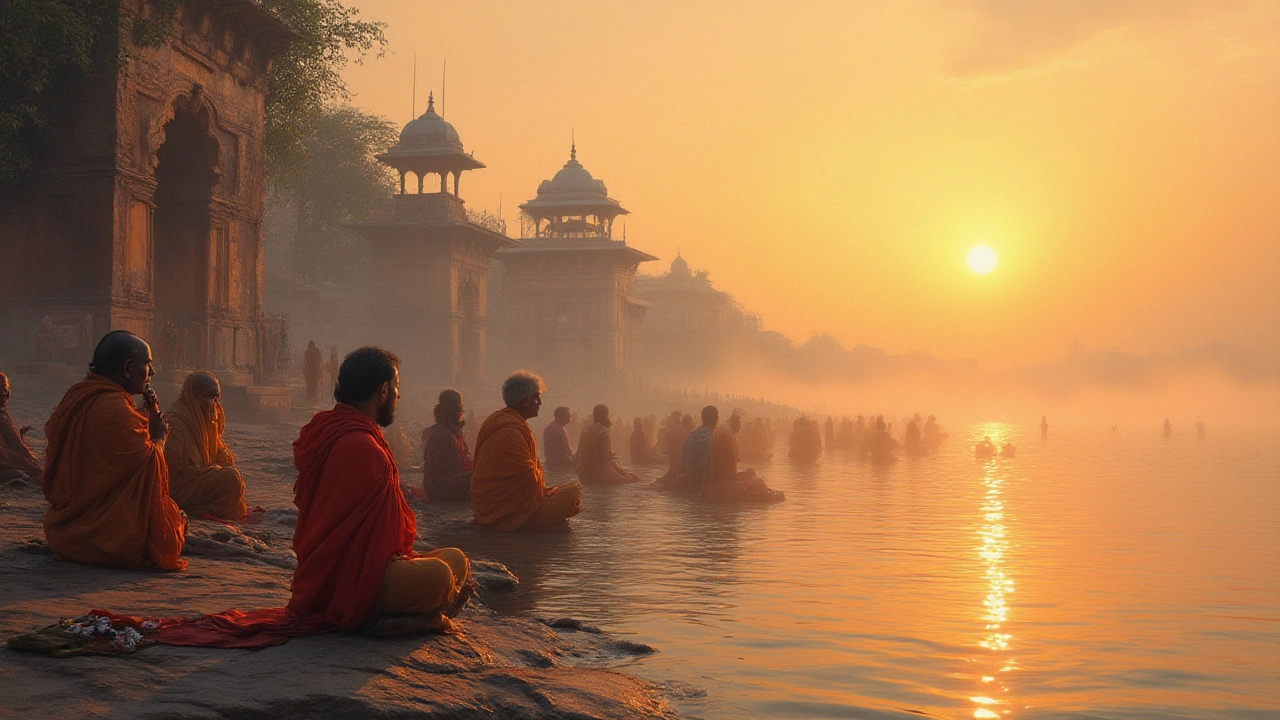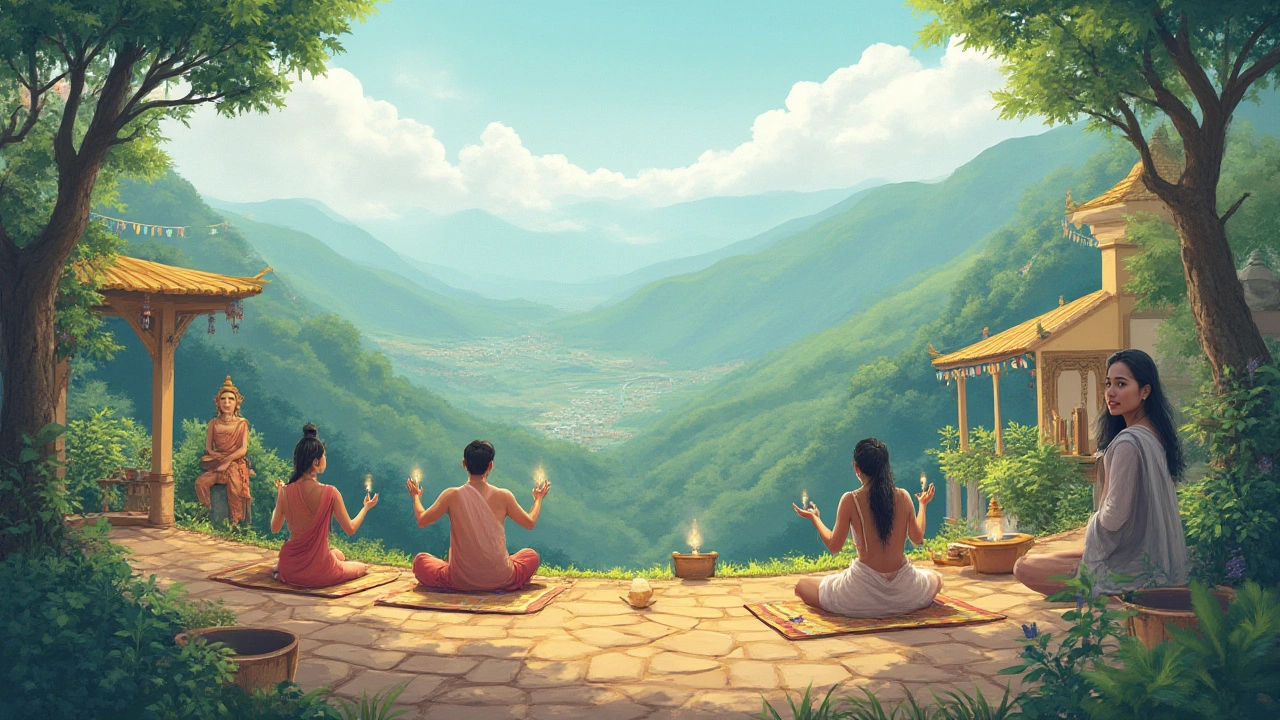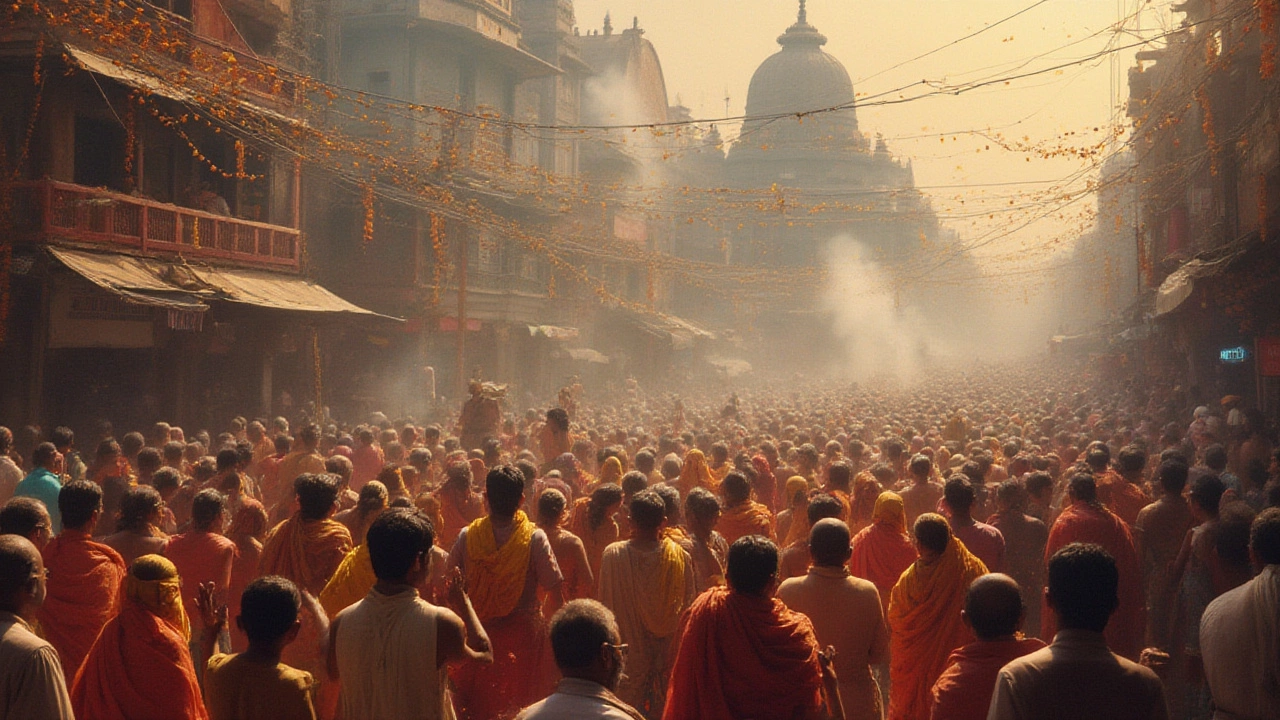Why is India Famous for Spirituality? Exploring Ancient Practices & Modern Influence

India doesn’t shout about its spiritual roots. It lives them—on the noisy streets, inside the smallest temples, in the rhythm of daily routines. Nobody wakes up and thinks, “Let’s be spiritual today.” It just blends into everything from the way chai is sipped at sunrise to the million rituals playing out in homes and public spaces. It isn’t a new reputation; people recognized India’s mystical pull thousands of years ago. But why does the world keep looking to this country for spiritual answers? That’s a story deeper than a few ancient yogis or Bollywood movies.
Ancient Foundations: The Birthplace of Spiritual Traditions
Picture this: long before pyramids or Greek philosophers, India’s river valleys—especially along the Indus and Ganges—buzzed with chants and fire rituals. Archaeologists unearthed “seals” from 2500 BCE carved with figures sitting in what looks like cross-legged meditation. Ancient texts like the Rigveda and Upanishads, written in Vedic Sanskrit over 3,000 years ago, introduced ideas of the soul (Atman), karma (action and consequence), and moksha (liberation). Philosophies from these early days don’t gather dust in museums; they fuel modern yoga classes from New York to Sydney.
Fast forward to about 500 BCE, and you get a spiritual revolution that even today blows people’s minds. Buddhism and Jainism both started as quiet rebellions against the old priestly hierarchies, emphasizing personal insight and non-violence. Gautama Buddha’s first sermon was delivered in Sarnath, a dusty town still drawing backpackers seeking “enlightenment.” Both these faiths go heavy on meditation, mindfulness, and renunciation—a lifestyle that challenges the rat-race most of us are stuck in. Their ideas leaped borders; Buddhist monks from India carried these teachings east to China, Japan, and beyond. The roots? They’ve always been here, deep in Indian soil.
Hinduism itself isn’t a single religion, but a messy, vast web of beliefs, gods, and practices. Yoga—currently a global fitness craze—started as a strict spiritual discipline, not a way to get better arms. The idea of OM, the cosmic sound, is everywhere, from street shrines to global retreats. And yet, no one bats an eye when a family celebrates Krishna’s birthday in the morning, then lights candles for Lakshmi in the evening. India didn’t just invent spiritual words—it keeps them living and breathing across centuries.
Ritual in Daily Life: Spirituality, Festivals, and Ordinary Moments
Step into an Indian neighborhood—teeming markets, clanking temple bells, incense floating above flower stalls. Spirituality isn’t reserved for monks. Every morning, women draw colorful rice patterns called ‘rangoli’ at their doors. Old men chant mantras as they walk by sacred rivers like the Ganges, believed to wash away sins. Shopkeepers pause to light a stick of incense, asking the gods for brisk sales. Kids in school might close their eyes for a one-minute silent prayer before classes start. Spirituality doesn’t wait for a special event; it slips quietly into the hours between work, school, and daily chores.
Festivals are something else—take the sheer scale of Diwali, the “festival of lights,” celebrated by over a billion people. It’s not just a religious ritual: it’s families cleaning homes, exchanging sweets, visiting neighbors, and lighting up entire cities. Or look at Kumbh Mela, the world’s largest religious gathering, where tens of millions of pilgrims bathe at holy rivers to cleanse their karma. That crowd is larger than the population of most countries. Even funerals have their own deep spiritual significance: ashes are often scattered in rivers, with the belief of merging into universal consciousness.
There’s a spiritual shortcut in normal life, too. People tie protective threads around wrists, hang lemon-chilies to ward off evil, or recite a quiet prayer before starting a car. It’s both personal and public. You’ll overhear debates on astrology at chai stalls or see crowded ashrams with followers from every continent. While the rituals can seem odd to outsiders, for most Indians they're as routine as brushing teeth. The spiritual seeps into every crevice of life—unnoticed, unhurried, and utterly real.

The Magnetic Pull for Seekers: Why the World Looks to India
This isn’t just a local affair. India draws millions from around the world each year, not only to snap selfies at the Taj Mahal, but to soak up insights they can’t buy anywhere else. Mark Twain called India “the cradle of the human race, the birthplace of human speech,” after seeing just how alive its spiritual traditions are. In the 1960s, The Beatles arrived in Rishikesh to meditate with Maharishi Mahesh Yogi and left transformed. Steve Jobs, too, took a long trip here—and what he found shaped the design and philosophy of Apple.
Yoga, as we know it, went global because of Indian gurus like Paramahansa Yogananda, Swami Sivananda, and B.K.S. Iyengar, who carried their teachings westward. Meditation techniques—Vipassana, TM (Transcendental Meditation), and countless others—have influenced everyone from celebrities to school kids. Ayurveda, India’s ancient holistic health system, ropes in people looking for natural and balanced healing, rather than pill-based quick fixes.
Let’s throw in some numbers for scale. Tourism stats show that spiritual and wellness tourism in India has boomed, especially since pandemic years. In 2023, Rishikesh and Varanasi alone drew over 6 million foreign visitors, most heading to ashrams or yoga centers. The Global Wellness Institute listed India among the top five “wellness destinations” worldwide. Why? Because people are tired of superficial fixes. India offers what people crave—space to pause, meaning that runs deeper than credit card statements, and an ancient toolkit tested over centuries.
Diversity of Paths: From Saints to Street Corners
Here’s what throws people for a loop: India doesn’t offer one-size-fits-all spirituality. You’ll find devout Hindus fasting during Navratri, but also Christians filling cathedrals in Goa, Sikhs volunteering free food (langar) at golden temples, and Sufis dancing through the night in Delhi. The spiritual landscape is a wild, living patchwork. Over 22 major languages, hundreds of local dialects, and a spectrum of beliefs—India pretty much has every answer, and sometimes the most confusing questions, too.
This country has churned out saints, mystics, and rebels in every era. Think of Kabir—15th-century poet who criticized blind rituals. In the 19th and 20th centuries, you had Swami Vivekananda, who basically introduced Hindu philosophy to the West, and Mother Teresa working in Kolkata’s slums. Ramana Maharshi quietly meditated at the foot of Arunachala, drawing spiritual tourists decades after his passing. Modern gurus like Sadhguru, Sri Sri Ravi Shankar, and Mata Amritanandamayi (the “hugging saint”) attract followers from Brooklyn to Berlin. There’s a spiritual style for every seeker—whether you’re after silence, song, devotion, or pure intellectual debate.
You don’t have to climb mountains or quit your job to tap in. Locals might chat with wandering sadhus in saffron robes, visit Sufi dargahs for music-fueled blessings, or simply whisper a prayer at an old banyan tree believed to house a spirit. The range of spiritual recipes on offer keeps growing. If you want evidence for this diversity, consider this: In 2024, there were over 900 officially organized spiritual and religious festivals across India, not counting countless unregistered community events. The streets are packed—and every path is valid.

Modern Life and Ancient Wisdom: Why Spirituality Still Thrives
It’s easy to assume that modern India—full of buzzing IT hubs, malls, and Bollywood blockbusters—has grown out of its spiritual roots. Not true. Inside glass office towers, workers sometimes keep tiny god statues or crystals near their computers. High schoolers take meditation breaks before exams. And despite the digital shift, the WhatsApp universe explodes with spiritual quotes, reminders about gratitude, and invitations to evening pujas. India spirituality adapts while it survives. Each generation finds its own meaning—maybe in a silent Vipassana retreat, maybe through online Darshans (virtual temple visits), or by engaging in environmental activism connected to traditional reverence for rivers and forests.
Want some hard facts here? The 2021 Pew Research survey on religion in India found that 97% of respondents, regardless of their faith, said spirituality is important to their daily lives. And there’s data on India’s rising meditation market, too: a 2022 industry report showed a 20% jump in apps and wellness services catering to young Indians—people who blend mindfulness with their digital lifestyles. Tech campuses in Bengaluru sometimes host on-site yoga sessions; urban planners in Mumbai have started creating “peace zones” modeled after ancient temple courtyards to give city dwellers a slice of serenity.
The upshot? Spirituality isn’t about running from life. It’s about finding calm and purpose inside the chaos. Ancient wisdom surrounds new ideas, not as relics, but as practical tools. Tips for those wanting to experience it honestly: wake up early and join a riverside aarti (ritual worship). Spend a night at an ashram, unplugged from your phone. Or simply taste the simple food that’s blessed before being served—prasad—in a roadside temple. If you want numbers, check the
| Place | Annual Visitors (2023) |
|---|---|
| Varanasi | 8,400,000 |
| Rishikesh | 5,900,000 |
| Bodh Gaya | 4,200,000 |
| Tirupati | 35,000,000 |
In the end, India’s spiritual pull isn’t hype or old stories. It’s alive in the dust and the dawn, in the tech-savvy youth as much as the saffron-robed sage. A billion people can’t fake it every day. If the planet is searching for meaning, it still makes sense to start the journey here—in the land that’s never stopped asking the big questions, and somehow, makes space for all the answers.